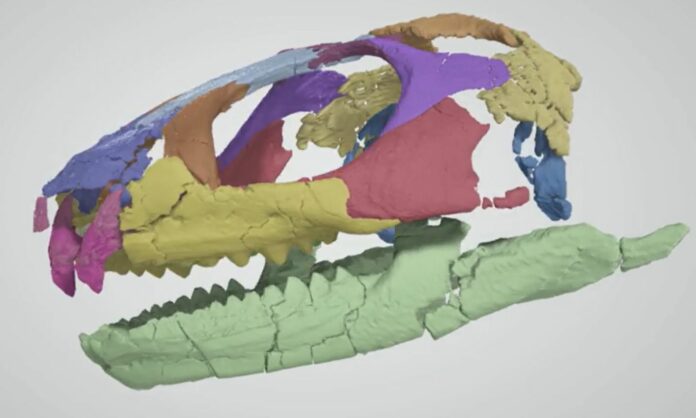The new species was named after museum volunteer Joseph Gregor, who spent hundreds of hours scraping and chiseling the bones from a block of stone that drew the attention of museum fossil preparator Pete Kroehler in 2010.
Smithsonian scientists have found a new type of extinct lizard-like reptile that comes from the same ancient lineage as the living tuatara in New Zealand. Researchers from the University College London and Natural History Museum, London, as well as the National Museum of Natural History’s curator of dinosaurs Matthew Carrano and research associate David DeMar Jr., as well as Marc Jones, talk about the new species Opisthiamimus gregori, which lived in Jurassic North America about 150 million years ago with dinosaurs like Stegosaurus and Allosaurus. This prehistoric reptile would have been approximately 16 centimeters (about 6 inches) from nose to tail in life and would have fit into the palm of an adult’s hand. It most likely dwelled on insects and other invertebrates.
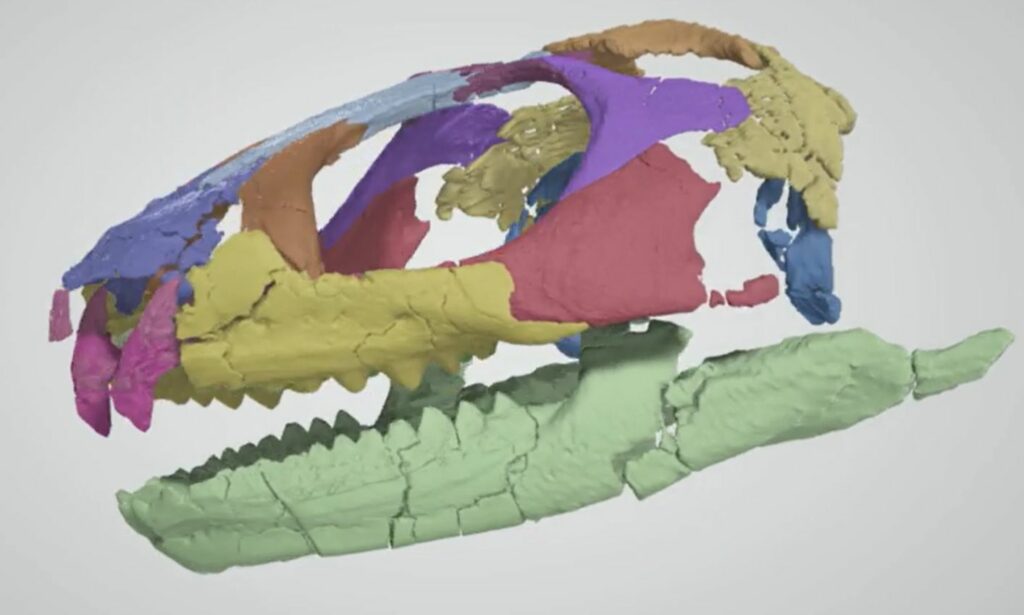
“What’s important about the tuatara is that it represents this enormous evolutionary story that we are lucky enough to catch in what is likely its closing act,” says Carrano, adding “even though it looks like a relatively simple lizard, it embodies an entire evolutionary epic going back more than 200 million years.”
The finding was made using a small number of specimens, one of which was an incredibly complete and well-preserved fossil skeleton discovered at a site around an Allosaurus nest in the Morrison Formation of northern Wyoming. It is possible that additional research on the find will shed light on the reasons why this animal’s ancient order of reptiles became extinct, going from being diversified and many in the Jurassic to only having the tuatara living in New Zealand now.
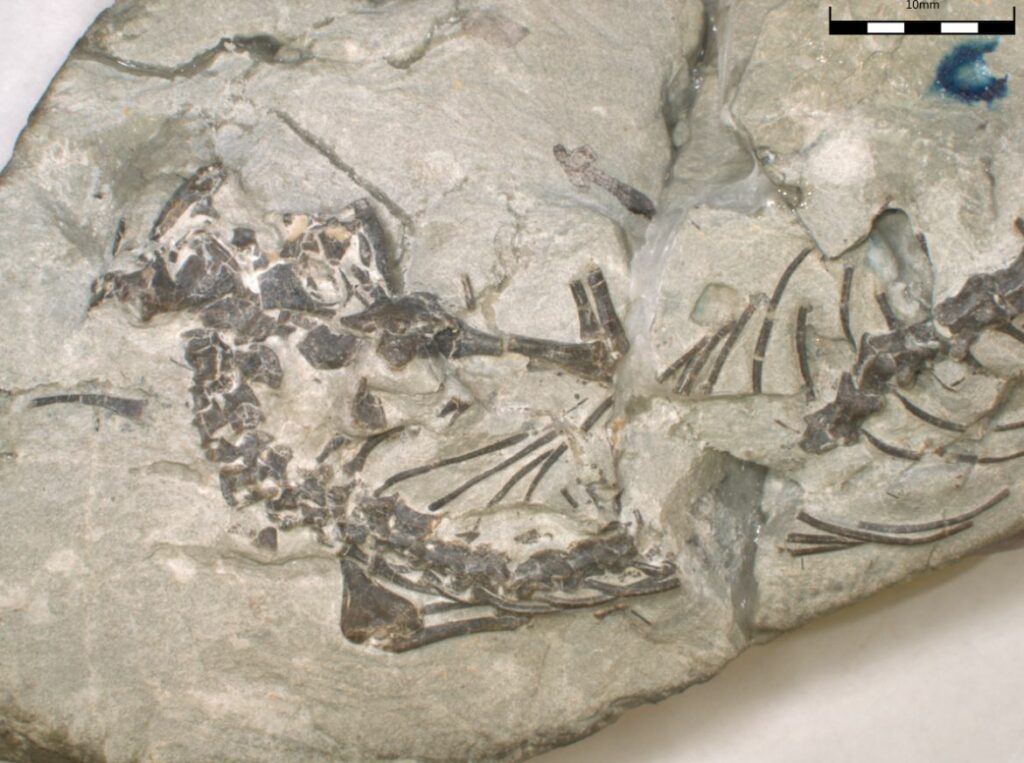
The tuatara looks a bit like a big iguana, but it is not a lizard. Neither is a newly discovered relative of the tuatara. Carrano said that they are actually rhynchocephalians, which is a group that split off from lizards at least 230 million years ago.
During the Jurassic period, rhynchocephalians lived all over the world. They were big and small, and their ecological roles ranged from eating fish to eating big plants.
Rhynchocephalians, however, virtually vanished when lizards and snakes became the more prevalent and diverse reptiles worldwide for reasons that are still not entirely understood.
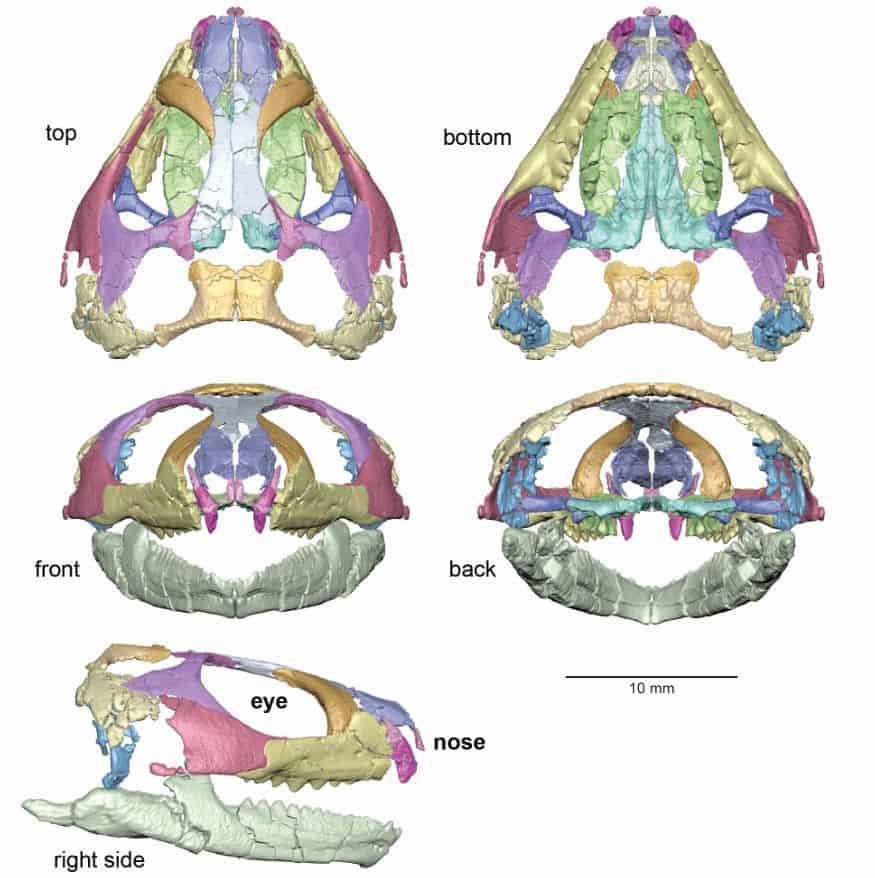
This difference in evolution between lizards and rhynchocephalians helps explain why the tuatara has some strange characteristics, like teeth that are fused to the jaw bone, a unique way of chewing in which the lower jaw slides back and forth like a saw blade, a lifespan of more than 100 years, and the ability to live in colder climates.
Carrano said that the fossil of O. gregori has been added to the museum’s collections, where it will be available for future study. It may help scientists figure out why only the tuatara is left of the rhynchocephalians, while lizards are now found all over the world, in the future.
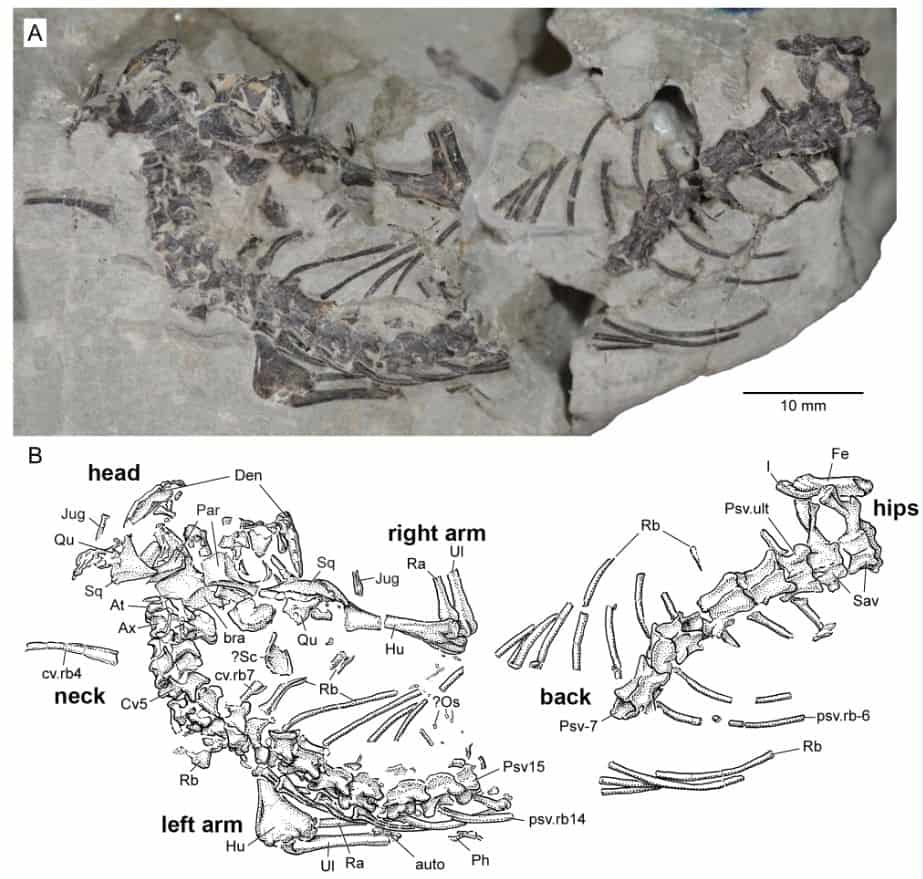
“These animals may have disappeared partly because of competition from lizards but perhaps also due to global shifts in climate and changing habitats,” adds Carrano. “It’s fascinating when you have the dominance of one group giving way to another group over evolutionary time, and we still need more evidence to explain exactly what happened, but fossils like this one are how we will put it together.”
The new species was named after museum volunteer Joseph Gregor, who spent hundreds of hours scraping and chiseling the bones from a block of stone that drew the attention of museum fossil preparator Pete Kroehler in 2010.
“Pete is one of those people who has a kind of X-ray vision for this sort of thing,” remarks Carrano. “He noticed two tiny specks of bone on the side of this block and marked it to be brought back with no real idea what was in it. As it turns out, he hit the jackpot.”
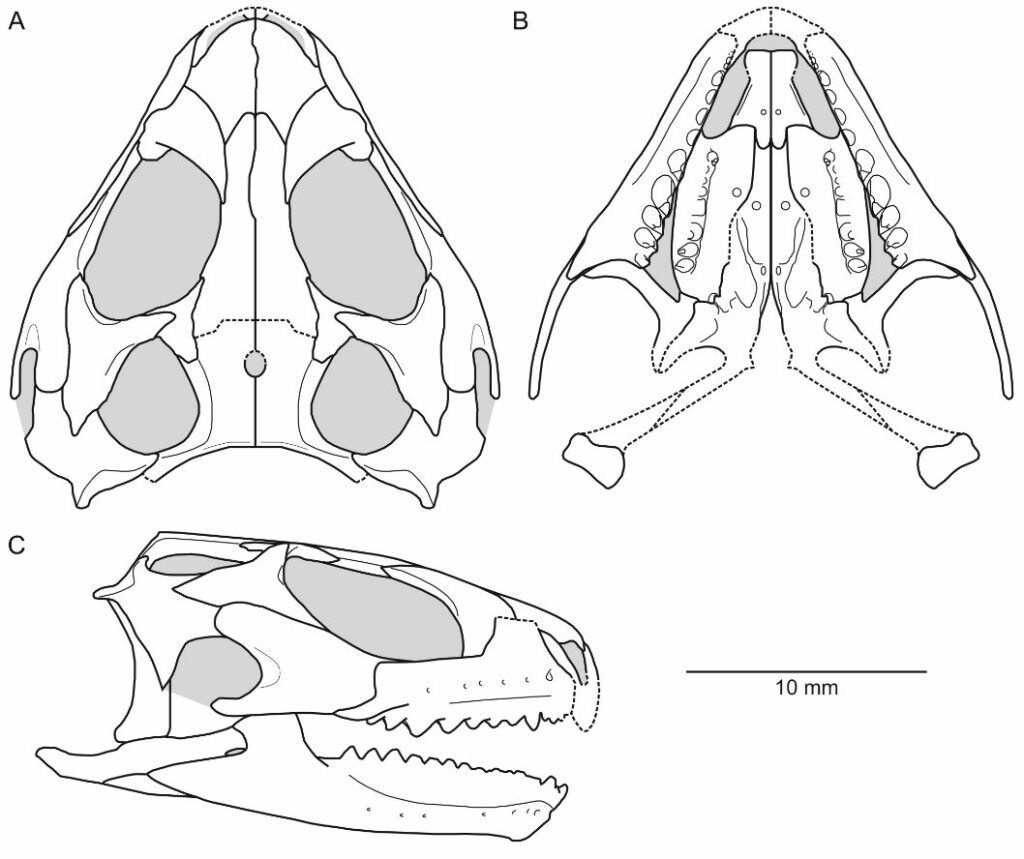
With the exception of the tail and some of the back legs, the fossil is nearly complete. According to Carrano, it is uncommon for small prehistoric species like this to have a full skeleton since their feeble bones were frequently broken either before they fossilized or as they emerged from an eroding rock formation in the present. So, paleontologists mostly know about rhynchocephalians from small pieces of their jaws and teeth.
Using high-resolution computerized tomography (CT), a technique that uses multiple X-ray images taken from various angles to create a 3D representation of the specimen, the team, led by DeMar, began scanning the tiny fossil after Kroehler, Gregor, and others had removed as much of it from the rock as was practical given its fragility. To gather as much information as they could on the fossil, the team made use of three different CT scanning facilities, one of which is housed at the National Museum of Natural History.
Once the fossil’s bones had been digitally reconstructed to an accuracy of less than a millimeter, DeMar used software to put back together the digitized bones of the skull, some of which were broken, out of place, or missing on one side. This made a nearly complete 3D reconstruction of the skull. Researchers can now examine this Jurassic-era reptile’s head in unprecedented detail thanks to the 3D-reconstructed skull.
DeMar speculates that Opisthiamimus dined on insects due to its small size, beetle- and water bug-like hard shells, and the configuration of its teeth and skull. Generally speaking, the new species resembles a smaller version of its only remaining relative (tuataras are about five times longer).
Such a comprehensive specimen, according to DeMar, “huge potential for making comparisons with fossils collected in the future and for identifying or reclassifying specimens already sitting in a museum drawer somewhere.”
“With the 3D models we have, at some point we could also do studies that use software to look at this critter’s jaw mechanics.”
The Smithsonian and the Australian Research Council provided funding and support for this study.
Source: 10.1080/14772019.2022.2093139
Image Credit: Getty
You were reading: This New Ancient Reptile Inhabited Jurassic North America 150 Million Years Ago
